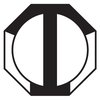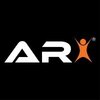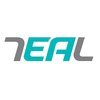
i
Filter interviews by
Technosoft Engineering Projects Limited PCB Designer Interview Questions, Process, and Tips
Technosoft Engineering Projects Limited PCB Designer Interview Experiences
1 interview found

(7 Questions)
- Q1. Explain PCB Design flow.
- Ans.
PCB Design flow involves schematic capture, component placement, routing, design verification, and manufacturing preparation.
Schematic capture: Creating a visual representation of the circuit using software like Altium Designer or Eagle.
Component placement: Placing components on the board to optimize signal integrity and minimize interference.
Routing: Creating traces to connect components while considering factors like...
- Q2. Why ESD diodes are placed close to connector?
- Ans.
ESD diodes are placed close to connector to protect the circuit from electrostatic discharge events.
ESD diodes help to divert any electrostatic discharge away from the sensitive components connected to the connector.
Placing ESD diodes close to the connector ensures that any ESD events are intercepted before reaching the rest of the circuit.
ESD diodes provide a path of least resistance for the discharge to follow, prote...
- Q3. Crystal Placement & Routing to achieve required Frequency.
- Ans.
Proper crystal placement and routing are crucial for achieving the required frequency in PCB design.
Place the crystal as close as possible to the microcontroller to minimize trace length and interference.
Route the crystal traces away from noisy components and high-speed signals to reduce interference.
Use ground planes and proper decoupling capacitors to ensure a stable and clean signal.
Avoid crossing crystal traces wit...
- Q4. EMI & EMC. Problems & Solutions.
- Q5. Kind of DRC errors faced.
- Ans.
Common DRC errors include clearance violations, trace width violations, and unconnected nets.
Clearance violations occur when components are too close together
Trace width violations happen when traces are too narrow
Unconnected nets occur when a net is not properly connected to a component
Other common DRC errors include overlapping objects and incorrect pad sizes
- Q6. Layer stack-up. Have you worked on Multilayer pcb & upto How many layer?
- Q7. What is High-speed frequency? Worked on high speed design?
- Ans.
High-speed frequency refers to signals that operate at a fast rate, typically in the GHz range, requiring careful design considerations.
High-speed frequency signals operate in the GHz range
Design considerations include impedance matching, signal integrity, and controlled impedance routing
Examples of high-speed designs include DDR memory interfaces and high-speed serial communication interfaces
(4 Questions)
- Q1. How many layers worked on? How do you decide to go for multilayer?
- Ans.
I have worked on 4-10 layers. The decision to go for multilayer depends on complexity, signal integrity, and space constraints.
Consider complexity of the design - more layers may be needed for complex circuits
Evaluate signal integrity requirements - high speed signals may require multilayer PCBs
Take into account space constraints - multilayer PCBs can help reduce size of the board
Cost considerations - multilayer PCBs a...
- Q2. Whats going on currently in electronics world market?
- Ans.
The electronics world market is currently experiencing advancements in IoT, AI, 5G technology, and sustainability.
Rapid growth of Internet of Things (IoT) devices connecting everyday objects to the internet
Advancements in Artificial Intelligence (AI) leading to smarter devices and automation
Rollout of 5G technology enabling faster and more reliable wireless communication
Focus on sustainability with eco-friendly materia...
- Q3. What is your current organization pcb design process?
- Q4. Kind of board worked on.
Skills evaluated in this interview
Top trending discussions






Interview questions from similar companies

Design Engineer Interview Questions & Answers
Automotive Robotics (India)posted on 4 Oct 2024
(2 Questions)
- Q1. Tell me the GD&T symbols
- Ans.
Geometric Dimensioning and Tolerancing (GD&T) symbols are used to define the geometry of parts and assemblies in engineering drawings.
GD&T symbols include position, concentricity, symmetry, perpendicularity, parallelism, flatness, circularity, cylindricity, profile of a line, profile of a surface, etc.
Each symbol has a specific meaning and is used to communicate the required tolerances for manufacturing and inspection ...
- Q2. Difference between solid & sheetmetal design
- Ans.
Solid design involves creating 3D models with volume, while sheetmetal design focuses on creating 2D models that can be bent or formed into 3D shapes.
Solid design is used for creating objects with volume and complex shapes.
Sheetmetal design is used for creating objects that can be easily bent or formed, typically used in manufacturing processes like metal fabrication.
Solid design often involves features like fillets, c...
Skills evaluated in this interview

Design Engineer Interview Questions & Answers
Automotive Robotics (India)posted on 27 Jan 2024
I applied via Approached by Company and was interviewed before Jan 2023. There were 2 interview rounds.
(1 Question)
- Q1. Tool test using creo software by modeling and detailing the given drawing
(1 Question)
- Q1. About GD&T previous experience

Design Engineer Interview Questions & Answers
Titan Engineering & Automationposted on 21 May 2024
I applied via Recruitment Consulltant and was interviewed in Apr 2024. There was 1 interview round.
(2 Questions)
- Q1. Calculations for selecting the pneumatic cylinders, load withstand, bearings, gears, hydraulics and lm guides??
- Ans.
Calculations for selecting components like pneumatic cylinders, bearings, gears, hydraulics, and lm guides involve considering load requirements, operating conditions, and safety factors.
Determine the load requirements for each component based on the application
Consider the operating conditions such as speed, temperature, and environment
Calculate the safety factors to ensure the components can withstand unexpected load...
- Q2. How do we select materials and on what basics??
- Ans.
Materials selection is based on factors like mechanical properties, cost, availability, and environmental impact.
Consider the mechanical properties required for the application (e.g. strength, stiffness, toughness)
Evaluate the cost of materials and compare it to the budget for the project
Assess the availability of materials in the required quantity and timeframe
Take into account the environmental impact of the material
Interview Preparation Tips

Design Engineer Interview Questions & Answers
Titan Engineering & Automationposted on 23 Sep 2024
(2 Questions)
- Q1. What is the current unit?
- Ans.
The current unit refers to the standard unit of measurement being used in a particular context.
The current unit can vary depending on the field or industry, such as inches in construction or Celsius in weather forecasting.
It is important to clarify the current unit to ensure accurate communication and data analysis.
Examples of current units include meters for length, kilograms for weight, and seconds for time.
- Q2. What is the resistance unit?
- Ans.
The resistance unit is the ohm (Ω), which measures the opposition to the flow of electric current.
The resistance unit is measured in ohms (Ω)
It represents the opposition to the flow of electric current
Resistance can be calculated using Ohm's Law: R = V/I, where R is resistance, V is voltage, and I is current
Interview Preparation Tips

Design Engineer Interview Questions & Answers
Automotive Robotics (India)posted on 15 Mar 2024
(1 Question)
- Q1. Technical interview
(1 Question)
- Q1. Salary discussion

Design Engineer Interview Questions & Answers
Automotive Robotics (India)posted on 25 Jun 2024
(2 Questions)
- Q1. Basic questions
- Q2. Experience about questions
(2 Questions)
- Q1. Salary package negotiable
- Q2. General information about you

Design Engineer Interview Questions & Answers
Automotive Robotics (India)posted on 5 Jan 2025
I applied via Job Portal and was interviewed in Dec 2024. There were 2 interview rounds.
(2 Questions)
- Q1. Ehat is sheetmetal?
- Ans.
Sheetmetal is a type of metal formed into thin and flat pieces, commonly used in manufacturing for various applications.
Sheetmetal is typically made from materials like aluminum, steel, or copper.
It is commonly used in industries such as automotive, aerospace, and construction.
Sheetmetal can be cut, bent, and formed into various shapes and sizes using tools like shears, brakes, and presses.
- Q2. Sheetmetal operation?
- Ans.
Sheetmetal operation involves cutting, bending, and forming sheet metal to create various components.
Cutting: Using tools like shears, lasers, or plasma cutters to cut sheet metal into desired shapes.
Bending: Using press brakes to bend sheet metal at specific angles.
Forming: Using techniques like deep drawing or roll forming to shape sheet metal into complex geometries.
(1 Question)
- Q1. Salary discussion

Design Engineer Interview Questions & Answers
Automotive Robotics (India)posted on 5 Jan 2025
I applied via Naukri.com and was interviewed in Dec 2024. There was 1 interview round.
(1 Question)
- Q1. What is sheetmetal?

Design Engineer Interview Questions & Answers
Falcon Autotechposted on 30 Aug 2023
I applied via Naukri.com and was interviewed in Jul 2023. There were 2 interview rounds.

(2 Questions)
- Q1. Need theoretical knowledge.
- Q2. Need knowledge about work of your previous organisation
Interview Preparation Tips
Technosoft Engineering Projects Limited Interview FAQs
Some of the top questions asked at the Technosoft Engineering Projects Limited PCB Designer interview -
Tell us how to improve this page.
Technosoft Engineering Projects Limited Interviews By Designations
- Technosoft Engineering Projects Limited Design Engineer Interview Questions
- Technosoft Engineering Projects Limited Mechanical Engg. Design Interview Questions
- Technosoft Engineering Projects Limited Design Engineer 3 Interview Questions
- Technosoft Engineering Projects Limited Business Development Executive Interview Questions
- Technosoft Engineering Projects Limited Process Engineer Interview Questions
- Technosoft Engineering Projects Limited Graduate Trainee Interview Questions
- Technosoft Engineering Projects Limited Project Manager-Production/Manufacturing/Maintenance Interview Questions
- Technosoft Engineering Projects Limited Senior Design Engineer Interview Questions
- Show more
Interview Questions for Popular Designations
- PCB Design Engineer Interview Questions
- Piping Designer Interview Questions
- Auto CAD Designer Interview Questions
- Design Engineer Interview Questions
- Mechanical Designer Interview Questions
- Electrical Designer Interview Questions
- Cadd Designer Interview Questions
- Mechanical Engg. Design Interview Questions
- Show more
Technosoft Engineering Projects Limited PCB Designer Interview Process
based on 1 interview
Interview experience
Interview Questions from Similar Companies
Technosoft Engineering Projects Limited PCB Designer Reviews and Ratings
based on 1 review
Rating in categories
|
Design Engineer
210
salaries
| ₹2.5 L/yr - ₹9 L/yr |
|
Senior Design Engineer
96
salaries
| ₹5.1 L/yr - ₹10.8 L/yr |
|
Mechanical Engg. Design
40
salaries
| ₹4.1 L/yr - ₹8 L/yr |
|
Team Lead
25
salaries
| ₹3.9 L/yr - ₹14 L/yr |
|
Project Lead
24
salaries
| ₹5 L/yr - ₹15 L/yr |

Siemens

Schneider Electric

Johnson Controls

Honeywell Automation
- Home >
- Interviews >
- Technosoft Engineering Projects Limited Interview Questions >
- Technosoft Engineering Projects Limited PCB Designer Interview Questions










